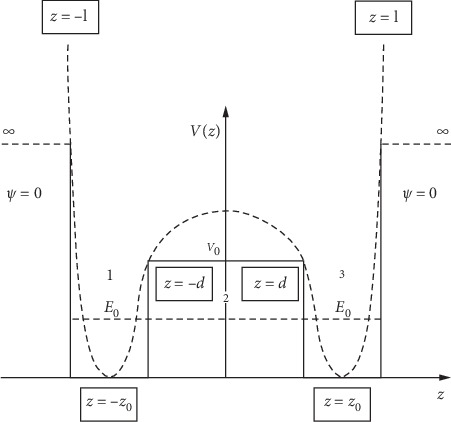An rising quantity of research are starting to point out that each low-density lipoprotein and high-density lipoprotein ldl cholesterol can represent threat elements for myocardial infarction. Such a behaviour has been referred to as by specialists in the discipline the “chameleonic impact” of ldl cholesterol.
In the current paper, a fractal/multifractal mannequin for low-density lipoprotein and high-density lipoprotein ldl cholesterol dynamics is proposed. In such a context, a fractal/multifractal tunneling impact for techniques with spontaneous symmetry breaking is analyzed in order that if the spontaneous symmetry breaking is assimilated to an irritation (in the kind of a particular scalar potential), then a coupling between two fractal/multifractal states will be noticed.
These two states, which have been related to organic buildings akin to low-density lipoprotein and high-density lipoprotein, switch their states through a fractal/multifractal tunneling impact.
Moreover, in our opinion, the broadly used notions of “good” and “dangerous” ldl cholesterol should be redefined as two completely different states (low-density lipoprotein and high-density lipoprotein) of the identical organic construction named “ldl cholesterol.” In our work, for the first time in the specialised literature, low-density lipoprotein and high-density lipoprotein have been considered two completely different states of the identical organic construction (named “ldl cholesterol”), akin to in nuclear physics, the neutron and proton are two completely different states of the identical particle named nucleon.

The position of carotid our bodies in the technology of lively inspiratory and expiratory responses to train in rats.
NEW FINDINGSWhat is the central query of this research? Physical train requires ventilatory changes to take care of arterial fuel homeostasis and pH.
The carotid our bodies (CBs) are sensory organs that modulate pulmonary air flow throughout train. However, the CBs contribution to the lively inspiratory and expiratory responses to train has not been beforehand explored.
What is the predominant discovering and its significance? Removal of the CBs lowered the lively inspiratory and expiratory responses of diaphragm and belly inner indirect muscle tissues, respectively, to high-intensity, however to not low-intensity, train in rats. Removal of the CBs elevated PaCO2 and decreased arterial pH in response to high-intensity train.
The CBs contribute to the inspiratory and expiratory changes to high-intensity train in rats.ABSTRACTExercise entails the interplay of a number of physiological processes, during which changes in pulmonary air flow happen in response to elevated O2 consumption, CO2 manufacturing and altered acid-base equilibrium.
The peripheral chemoreceptors (carotid our bodies – CBs) are delicate to adjustments in the chemical composition of arterial blood and their activation induces lively inspiratory and expiratory responses. Herein, we examined the speculation that the CBs contribute to the lively inspiratory and expiratory responses to train in rats.
We carried out electromyographic recordings of the diaphragm (DiaEMG ) and belly inner indirect (AbdEMG ) muscle tissues in rats earlier than and after bilateral elimination of the CBs (CBX) throughout constant-load low-intensity and high-intensity progressive treadmill train. We additionally collected arterial blood samples for gaseous and pH analyses. Similar will increase in DiaEMG frequency in each experimental circumstances (earlier than and after CBX) throughout low-intensity train had been noticed, with out important adjustments in the DiaEMG amplitude.
During high-intensity train, decrease responses of each DiaEMG frequency and amplitude had been noticed in rats after CBX. The AbdEMGphasic lively expiratory response was not important both earlier than or after CBX throughout low-intensity train.
However, CBX lowered the phasic lively expiratory responses throughout high-intensity train. The blunted responses of inspiratory and expiratory changes to high-intensity train after CBX had been related to greater PaCO2 ranges and decrease arterial pH values. Our information present that in rats, the CBs don’t take part in the inspiratory and expiratory responses to low-intensity train, however are concerned in the respiratory compensation in opposition to the metabolic acidosis induced by high-intensity train.
